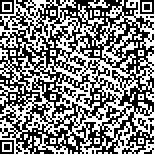| 本文已被:浏览 5257次 下载 7613次 |

码上扫一扫! |
|
|
| 东太平洋不同海区茎柔鱼肌肉脂肪酸组成分析与比较 |
|
贡艺1, 李云凯1,2,3,4,5, 陈玲6, 高小迪1, 陈新军1,7,8,9
|
|
1.上海海洋大学海洋科学学院 上海 201306;2. 青岛海洋科学与技术试点国家实验室海洋渔业科学与食物产出过程功能实验室 青岛 266071;3. 农业农村部大洋渔业开发重点实验室 上海 201306;4. 国家远洋渔业工程技术研究中心 上海 201306;5. 大洋渔业资源可持续开发教育部重点实验室 上海 201306;6.上海海洋大学海洋生态与环境学院 上海 201306;7.农业农村部大洋渔业开发重点实验室 上海 201306;8.国家远洋渔业工程技术研究中心 上海 201306;9.大洋渔业资源可持续开发教育部重点实验室 上海 201306
|
|
| 摘要: |
| 茎柔鱼(Dosidicus gigas)是一种广泛分布在东太平洋的大洋性头足类,具有重要的经济价值。本研究以捕获自3个作业海区的茎柔鱼为研究对象,对其肌肉脂肪酸含量进行测定、分析和比较。结果显示,各海区茎柔鱼肌肉脂肪酸种类和组成存在显著差异。秘鲁外海样品所含脂肪酸种类最多(共28种),中东太平洋赤道海域样品含有脂肪酸27种,而智利外海样品所含脂肪酸种类最少,只检测出24种。脂肪酸均以多不饱和脂肪酸为主(59.68%~69.28%),其次是饱和脂肪酸(20.71%~27.28%)和单不饱和脂肪酸(10.01%~13.04%)。各海区茎柔鱼肌肉中C16:0、C18:0、C20:1n9、C18:2n6、EPA和DHA含量较高,均占脂肪酸总含量的81%以上。脂肪酸组成的空间异质性主要是由各海区C16:0、C18:2n6、C20:4n6和DHA的含量不同造成的,这种差异可能与各海区海洋环境、食物来源和个体能量需求的差别有关。本研究说明了脂肪酸分析在茎柔鱼食性研究中的潜在作用,对分析不同海区茎柔鱼营养成分和资源合理利用有一定的应用价值。 |
| 关键词: 茎柔鱼 肌肉 脂肪酸 比较分析 |
| DOI: |
| 分类号: |
| 基金项目: |
|
| A Comparative Analysis of Fatty Acid Profiles in Muscle of Dosidicus gigas from Different Harvest Locations in the Eastern Pacific Ocean |
|
GONG Yi,LI Yunkai,CHEN Ling,GAO Xiaodi,CHEN Xinjun
|
|
1.College of Marine Sciences, Shanghai Ocean University, Shanghai 201306;2.Laboratory for Marine Fisheries Science and Food Production Processes, Pilot National Laboratory for Marine Science and Technology (Qingdao), Qingdao 266071;3.Key Laboratory of Oceanic Fisheries Exploration, Ministry of Agriculture and Rural Affairs, Shanghai 201306;4.National Engineering Research Center for Oceanic Fisheries, Shanghai 201306;5.Key Laboratory of Sustainable Exploitation of Oceanic Fisheries Resources, Ministry of Education, Shanghai 201306;6.College of MarineEcology and Environment, Shanghai Ocean University, Shanghai 201306
|
| Abstract: |
| The jumbo squid (Dosidicus gigas) is a pelagic cephalopod endemic to the eastern Pacific Ocean with a valuable commercial role. In this study, fatty acid profiles were identified in jumbo squid muscle tissues from three harvest locations. Comparative analysis was used to evaluate spatial variation in fatty acid profiles of different geographic origins. Results showed significant differences in fatty acid profiles among squid muscle tissues from different sampling locations. The number of fatty acid types from the squid off Peru (28) was high compared with that from squid in the waters of the equatorial central eastern Pacific (27) and those off Chile (24). Nonetheless, among all three geographic origins, the dominant fatty acids were polyunsaturated fatty acids (PUFA), which accounted for 59.68%~69.28% of the total amount of all fatty acids, followed by saturated fatty acids (SFA, 20.71%~27.28%) and monounsaturated fatty acids (MUFA, 10.01%~13.04%). C16:0, C18:0, C20:1n9, C18:2n6, C20:5n3 (eicosapentaenoic acid, EPA), and C22:6n3 (docosahexaenoic acid, DHA) were the primary fatty acids in jumbo squid muscle tissues, which accounted for more than 81% among all areas. The results of analysis of similarity (ANOSIM) and similarities of variance (SIMPER) showed that the spatial heterogeneity of fatty acid profiles was mainly influenced by C16:0, C18:2n6, C20:4n6, and DHA. We propose that the observed variations could be the result of differences in oceanographic conditions, food sources, and energy demands of squid among varied regions. Overall, these results demonstrated the feasibility of using fatty acid analysis to study the feeding ecology of jumbo squid. Novel information on the heterogeneity of fatty acid profiles among harvest locations may have important implications for their nutrition studies and for better utilizing this important resource. |
| Key words: Dosidicus gigas Muscle Fatty acid Comparative analysis |